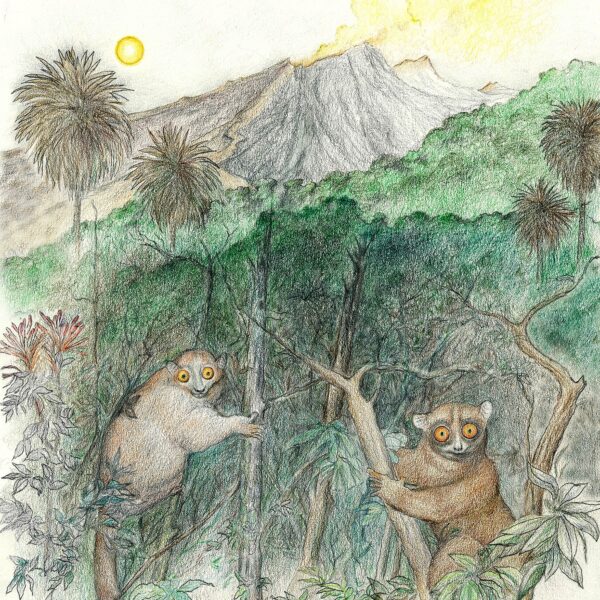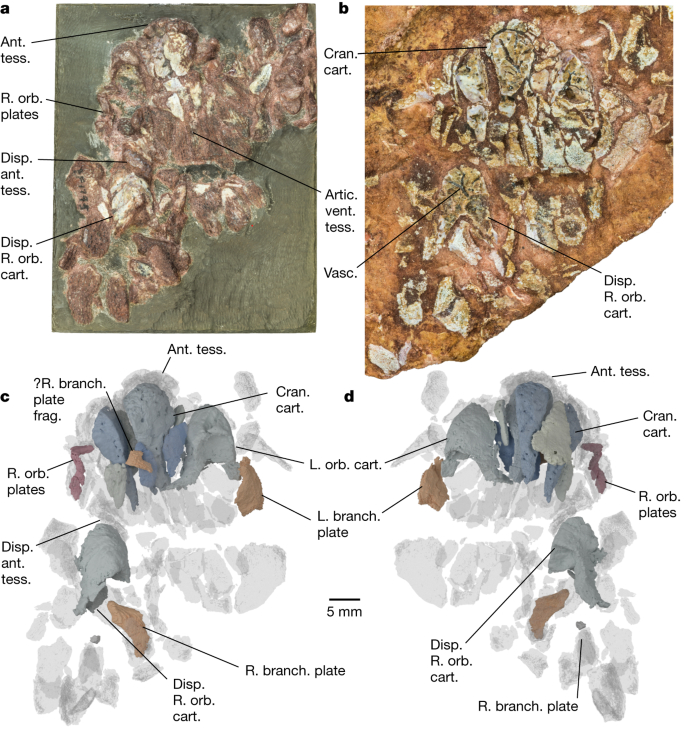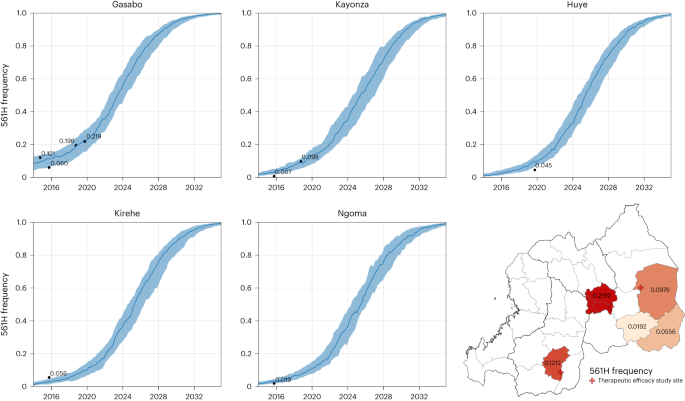2023-09-21 テキサス大学オースチン校(UT Austin)

Artist’s reconstruction of two species described in the paper — Mytonius williamsae (L) and Diablomomys dalquesti (R) — in Big Bend country in West Texas 44 million years ago in the middle Eocene. The volcano on the skyline is a reminder of the active volcanism that was occurring in this part of Texas during the Eocene and Oligocene epochs. Image: Randwulph.
◆新種は大型で、現代のワオキツネザルに似た姿で、果物と葉を食べていたと考えられています。この地域の霊長類は他の地域の霊長類とは異なり、地域環境に適応して進化した可能性が示唆されています。
<関連情報>
- https://news.utexas.edu/2023/09/21/2-new-species-of-ancient-primates-identified-that-resembled-lemurs/
- https://www.sciencedirect.com/science/article/abs/pii/S0047248423001045
ユタ州ユインタ盆地とテキサス州トルニロ盆地から新生代中新世オモミイデス(霊長目オモミイデス科)の新標本が発見された。 New specimens of middle Eocene omomyines (Primates, Omomyoidea) from the Uinta Basin of Utah and the Tornillo Basin of Texas, with clarification of the generic status of Ourayia, Mytonius, and Diablomomys
E. Christopher Kirk, Rachel H. Dunn, Benjamin Rodwell, K. E. Beth Townsend
Journal of Human Evolution Available online: 20 September 2023
DOI:https://doi.org/10.1016/j.jhevol.2023.103425
Abstract
In the middle Eocene, multiple lineages of North American omomyoids independently evolved body masses greater than 500 g. Most of these large-bodied omomyoids are known from small sample sizes, which has contributed to a lack of consensus regarding their alpha taxonomy. Here, we describe new Uintan omomyine specimens from the Uinta Basin of Utah and the Tornillo Basin of Texas. These new samples expand the hypodigms of Diablomomys dalquesti, Mytonius hopsoni, and Ourayia uintensis, and favor the recognition of new species of Mytonius and Ourayia based on specimens from the Tornillo Basin. These samples support the recognition of Diablomomys as a valid genus distinct from Omomys, Ourayia as a valid genus distinct from Macrotarsius, and Mytonius as a valid genus distinct from Ourayia. Although Diablomomys and Omomys co-occur in the late Uintan of the Tornillo Basin, Ourayia and Mytonius are time-successive taxa with a wide distribution across multiple Laramide basins. The data presented here reinforce the conclusion that the Uintan was a time period in which omomyines diversified to include a large number of taxa with body masses above Kay’s threshold and frugivorous–folivorous diets. These data also provide evidence that North American primate faunas exhibited a shifting pattern of regional endemism during the middle Eocene. By the early Uintan, primate faunas from Southern California were already quite distinct from primate faunas of the central Rocky Mountains or Trans-Pecos Texas. By the late Uintan, primate faunas in all three regions demonstrated greater provincialism, with Trans-Pecos Texas and Southern California both exhibiting a large number of endemic primate taxa and sharing only a single primate genus (Macrotarsius) in common. This increase in primate endemism across the Uintan may be tied to changes in paleohabitats associated with the larger trend toward decreasing temperatures from the Early Eocene Climatic Optimum to the Eocene/Oligocene transition.


